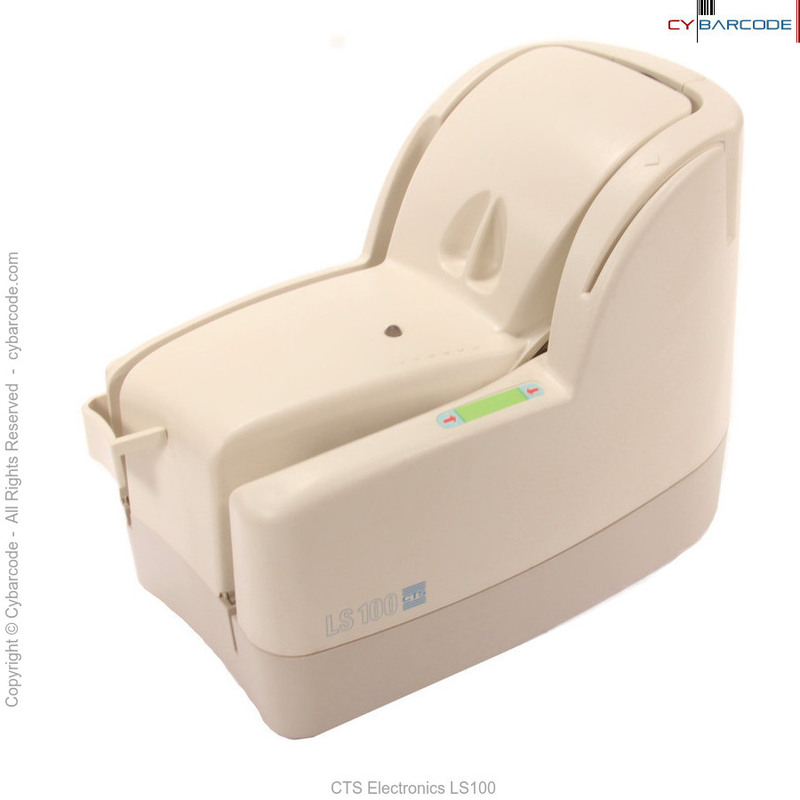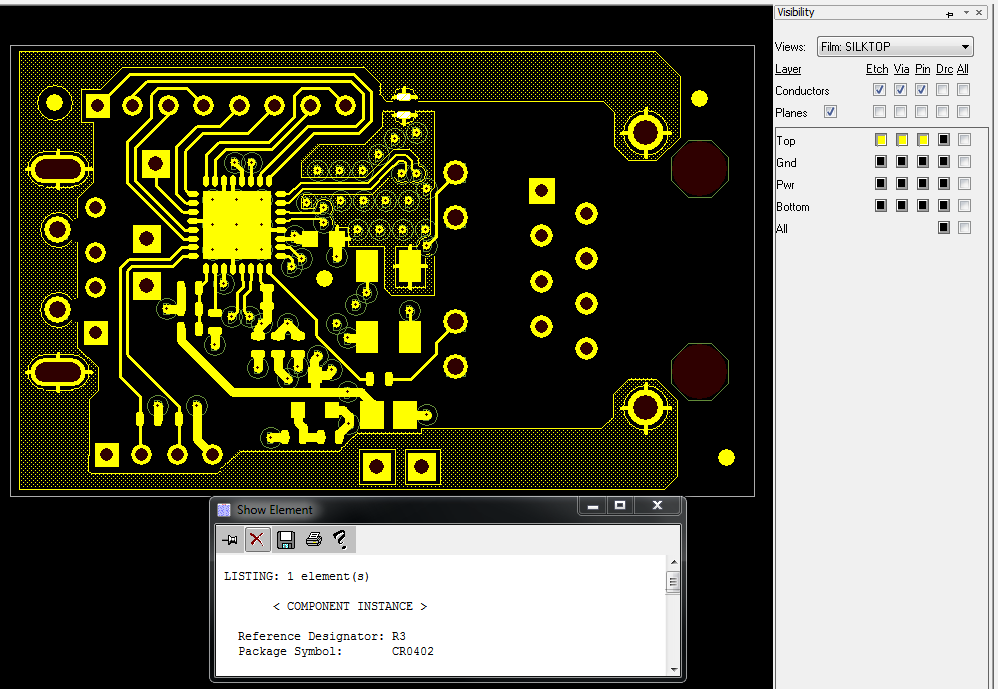- CTS/Arca: Scanning Speed: 150 Documents per Minute: USB Support: Yes: Weight: 3.5 kg: Ethernet: Ethernet connectivity 10/100Base-T and WIFI by LsConnect device: Model: ARCA LS150 Check Scanner: Dimensions: 9' L x 5.5' W x 6.9' H: Resolution: 100,200 or 300 dpi,selectable: Gray Scale Levels: 16 or 256: Image Formats.
- CTS Electronics LS800 USB Drivers Available: Operating System Driver Provider Driver Version; Download Driver: Windows XP (64 bit) CTS Electronics, Inc: 01.00.00.01.
- USB Type C: Often referred to simply as USB-C, these plugs and receptacles are rectangular in shape with four rounded corners.Only USB 3.1 Type C plugs and receptacles (and thus cables) exist but adapters for backward compatibility with USB 3.0 and 2.0 connectors are available.
- Cts Electronics Ls 100 Usb Driver Download
- Cts Electronics Ls 100 Usb Drivers
- Cts Electronics Ls 100 Usb Driver Adapter
ARCA LS150 Check Scanner LS150UV is the most advanced solution which adds ultraviolet recognition to the compact, fast and sturdy LS150 standard device, the ARCA check scanner system designed for bank teller and back counter, commercial, retail, remittance.
-->Versions supported
- Windows 10
- Windows 8.1
Applies to
- Device manufacturers of CDC Control devices
Microsoft-provided in-box driver (Usbser.sys) for your Communications and CDC Control device.
In Windows 10, the driver has been rewritten by using the Kernel-Mode Driver Framework that improves the overall stability of the driver.
- Improved PnP and power management by the driver (such as, handling surprise removal).
- Added power management features such as USB Selective Suspend.
In addition, UWP applications can now use the APIs provided by the new Windows.Devices.SerialCommunication namespace that allow apps to talk to these devices.
Usbser.sys installation
Load the Microsoft-provided in-box driver (Usbser.sys) for your Communications and CDC Control device.
Note
If you trying to install a USB device class driver included in Windows, you do not need to download the driver. They are installed automatically. If they are not installed automatically, contact the device manufacturer. For the list of USB device class driver included in Windows, see USB device class drivers included in Windows.
Windows 10
In Windows 10, a new INF, Usbser.inf, has been added to %Systemroot%Inf that loads Usbser.sys as the function device object (FDO) in the device stack. If your device belongs to the Communications and CDC Control device class, Usbser.sys is loaded automatically.You do not need to write your own INF to reference the driver. The driver is loaded based on a compatible ID match similar to other USB device class drivers included in Windows.
Cts Electronics Ls 100 Usb Driver Download
USBClass_02
USBClass_02&SubClass_02
- If you want to load Usbser.sys automatically, set the class code to 02 and subclass code to 02 in the Device Descriptor. For more information, see USB communications device class. With this approach, you are not required to distribute INF files for your device because the system uses Usbser.inf.
- If your device specifies class code 02 but a subclass code value other than 02, Usbser.sys does not load automatically. Pnp Manager tries to find a driver. If a suitable driver is not found, the device might not have a driver loaded. In this case, you might have to load your own driver or write an INF that references another in-box driver.
- If your device specifies class and subclass codes to 02, and you want to load another driver instead of Usbser.sys, you have to write an INF that specifies the hardware ID of the device and the driver to install. For examples, look through the INF files included with sample drivers and find devices similar to your device. For information about INF sections, see Overview of INF Files.

Note
Microsoft encourages you to use in-box drivers whenever possible. On mobile editions of Windows, such as Windows 10 Mobile, only drivers that are part of the operating system are loaded. Unlike desktop editions, it is not possible to load a driver through an external driver package. With the new in-box INF, Usbser.sys is automatically loaded if a USB-to-serial device is detected on the mobile device.
Windows 8.1 and earlier versions
In Windows 8.1 and earlier versions of the operating system, Usbser.sys is not automatically loaded when a USB-to-serial device is attached to a computer. To load the driver, you need to write an INF that references the modem INF (mdmcpq.inf) by using the Include directive. The directive is required for instantiating the service, copying inbox binaries, and registering a device interface GUID that applications require to find the device and talk to it. That INF specifies 'Usbser' as a lower filter driver in a device stack.
The INF also needs to specify the device setup class as Modem to use mdmcpq.inf. Under the [Version] section of the INF, specify the Modem and the device class GUID. for details, see System-Supplied Device Setup Classes.
For more information, see this KB article.
Configure selective suspend for Usbser.sys
Starting in Windows 10, Usbser.sys supports USB Selective Suspend. It allows the attached USB-to-serial device to enter a low power state when not in use, while the system remains in the S0 state. When communication with the device resumes, the device can leave the Suspend state and resume Working state. The feature is disabled by default and can be enabled and configured by setting the IdleUsbSelectiveSuspendPolicy entry under this registry key:
Cts Electronics Ls 100 Usb Drivers
To configure power management features of Usbser.sys, you can set IdleUsbSelectiveSuspendPolicy to:
'0x00000001': Enters selective suspend when idle, that is, when there are no active data transfers to or from the device.
'0x00000000': Enters selective suspend only when there are no open handles to the device.
That entry can be added in one of two ways:

Write an INF that references the install INF and add the registry entry in the HW.AddReg section.
Describe the registry entry in an extended properties OS feature descriptor. Add a custom property section that sets the bPropertyName field to a Unicode string, 'IdleUsbSelectiveSuspendPolicy' and wPropertyNameLength to 62 bytes. Set the bPropertyData field to '0x00000001' or '0x00000000'. The property values are stored as little-endian 32-bit integers.
For more information, see Microsoft OS Descriptors.

Develop Windows applications for a USB CDC device
If you install Usbser.sys for the USB CDC device, here are the application programming model options:
Starting in Windows 10, a Windows app can send requests to Usbser.sys by using the Windows.Devices.SerialCommunication namespace. It defines Windows Runtime classes that can use to communicate with a USB CDC device through a serial port or some abstraction of a serial port. The classes provide functionality to discover such serial device, read and write data, and control serial-specific properties for flow control, such as setting baud rate, signal states.
In Windows 8.1 and earlier versions, you can write a Windows desktop application that opens a virtual COM port and communicates with the device. For more information, see:
Win32 programming model:
.NET framework programming model:
Related topics
Cts Electronics Ls 100 Usb Driver Adapter
| Part Number | Description | Cable Details | Link to Datasheet | Buy from FTDI | ||
| TTL UART cables supporting range of voltage I/O levels with wire-ended output | TTL-232RG-VSW3V3-WE | Supports +3.3V based TTL level UART signals and +3.3V / 50mA power output. |
| Datasheet | ||
| TTL-232RG-VSW5V-WE | Supports +5V based TTL level UART signals and +5V / 450mA power output | Datasheet | ||||
| TTL-232RG-VREG3V3-WE | Supports +3.3V based TTL level UART signals and +3.3V / 250mA rated power output. | Datasheet | ||||
| TTL-232RG-VREG1V8-WE | Supports +1.8V TTL level UART signals and +1.8V / 100mA rated power output. | Datasheet | ||||
| TTL-232RG-VIP-WE | Cable features voltage reference input for setting UART signalling levels. | Datasheet | ||||
| TTL-232R-3V3-WE | Version 1 cable. Supports +3.3V UART signalling and +5V/75mA power output. | Datasheet | ||||
| TTL-232R-5V-WE | Version 1 cable. Supports +5V based UART signalling and +5V/75mA based power output. | Datasheet | ||||
| Connector based cables | TTL-232R-3V3 | USB cable with 6 way 0.1' pitch single inline connector with +3.3V signalling. |
| Datasheet | ||
| TTL-232R-5V | USB cable with 6 way 0.1' pitch single inline connector with +5.0V signalling. | Datasheet | ||||
| TTL-232R-3V3-2mm | USB cable with +3.3V based UART output on 2mm connector. Designed for use with FTDI VDRIVE2 and VMUSIC2 modules. |
| Datasheet | |||
| TTL-232R-3V3-AJ | Cable with audio jack connector with +3.3V based TX, and RX signalling. |
| Datasheet | |||
| TTL-232R-5V-AJ | Cable with audio jack connector with +5V based TX and RX signalling. | Datasheet | ||||
| PCB assemblies | TTL-232R-3V3-PCB | PCB only. Supports +3.3V UART signalling and +5V/75mA power output. |
| Datasheet | ||
| TTL-232R-5V-PCB | PCB only. Supports +5V UART signalling and +5V/75mA power output. | Datasheet |